How do you keep your catch as fresh as possible? Do you just bleed and ice the fish? Do you want a nearly sashimi-grade catch to bring back home every time? Rigor mortis (stiffness of death) is the third stage of death in all living things. It is the stage where all the muscles become rigid. It’s followed by decay, when the meat starts to turn mushy and fall apart. You might have seen your fish on the cleaning table at that stage before. The meat has a lot of gapping in between the muscles and the first signs of decay due to warm temperatures. Luckily, there are ways to stave off rigor mortis and preserve your fish.
What is Ike-Jime? What is Shinkei-Jime?
Ike-jime and shinkei-jime are Japanese methods of humanely killing a fish, which have been used all over Asia for many decades. Ike-jime spikes the brain; then shinkei-jime destroys the spinal cord. Ike-jime kills the fish so that it doesn’t even know it is dying, which helps maintain the meat quality. Of course, proper icing is still required. Let’s look at the tools and how to perform ike-jime and shinkei-jime on any fish.
All you need is a spike and some wire or thick fishing line. In Asia, most people use an ice pick for the spike, but you can even use a long, pointed screwdriver.
I recommend 16-gauge stainless steel or galvanized steel wire for the spinal cord destruction, though you can also use 200-lb mono fishing line. You can even buy a combo set spike with a hole through which to thread a wire.
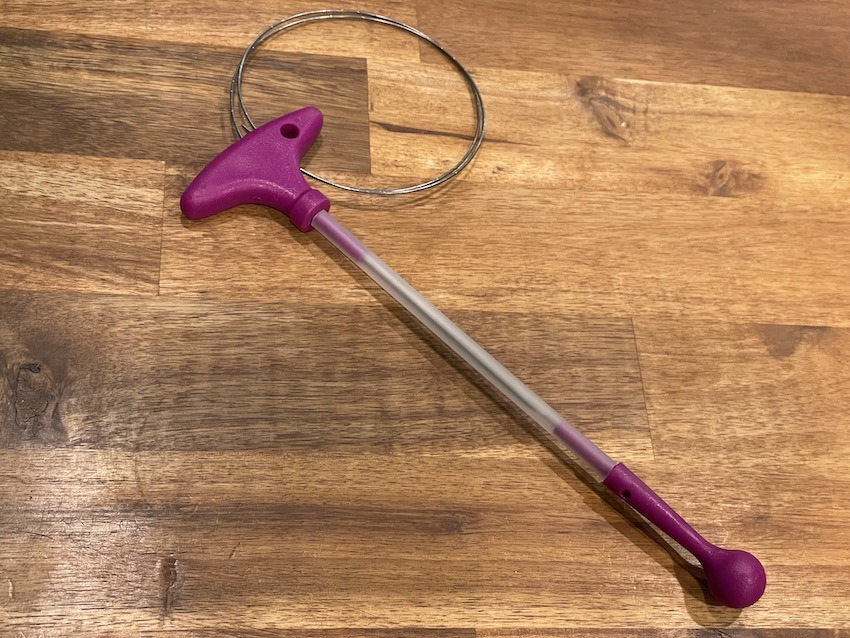
How To Perform Ike-Jime
There are two methods of performing ike-jime, both of which put the fish out of its misery with very little stress:
The first separates the brain from the nervous system. Cut the fish’s head off from the neck down around the gill (Figure 1). The fish will just ‘jiggle’.

The second method is spiking the brain. Locating a fish’s brain can be challenging. Find the lateral line of the fish towards its head and eyes. Drive the spike in between the eyes, above the nose of the fish, towards the beginning of the lateral line near the gill plate (Figure 2). When you’ve nailed its brain, the fish will do a “funky chicken dance” and its mouth will open wide. Ike-jime delays rigor mortis. But if we perform shinkei-jime, rigor mortis is delayed even longer.
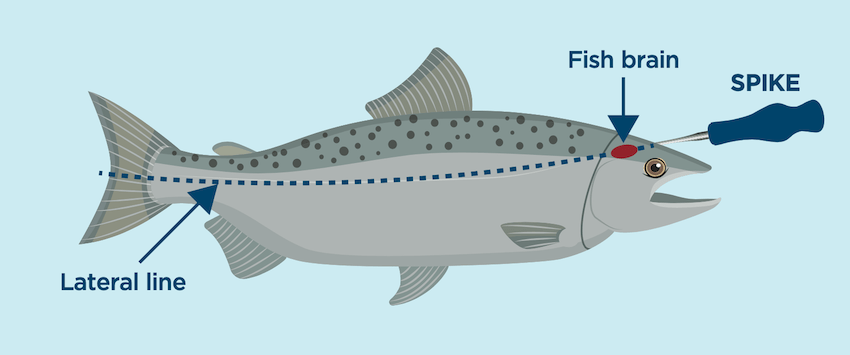
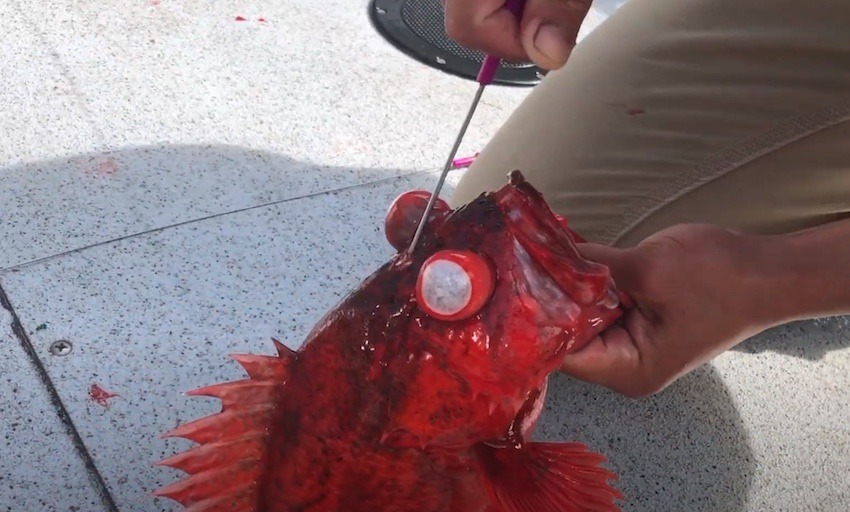
What is Shinkei-Jime?
Shinkei-jime is spinal cord destruction that will completely shut down the fish’s nervous system, and keep it from firing fight-or-fight adrenaline to the flesh. The fish does not know it is dying, and the meat just relaxes and retains a fresh texture. There are a few ways of performing shinkei-jime.
The first method is done after the head is cut off. Find the backbone of the fish; between the backbone and the dorsal fins you’ll find the spinal cord. Insert a wire or rod into the spinal cord to damage it (Figure 3).
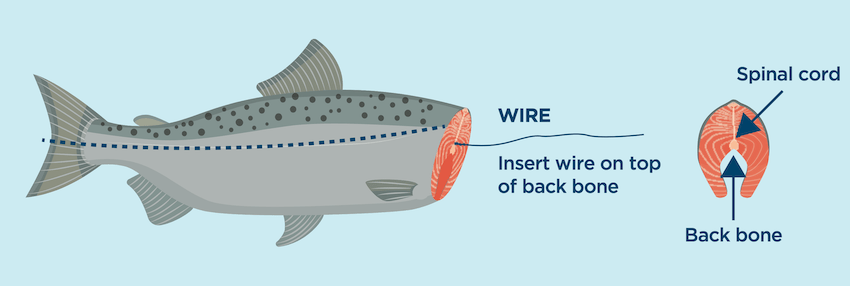
Hold on to the fish—it will flail about until you completely damage the spinal cord, but it soon becomes calm and the meat relaxes. The wire or rod inserted should be the same length as the fish.(Figure 4).
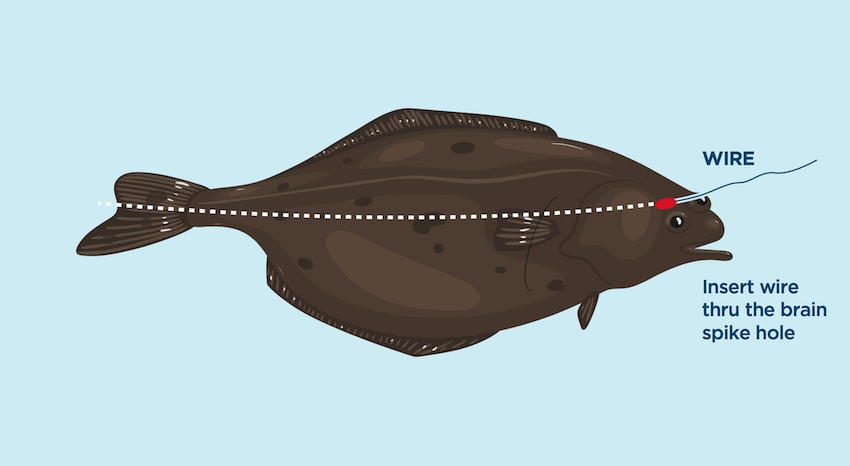
In this method, it can sometimes be hard to find the spinal cord, and it can be especially difficult to insert the wire in larger fish—like rockfish. Once you insert a wire through the hole and into the spinal cord, the fish’s nervous system will react. The third method works well on large fish like rockfish, lingcod, halibut, and larger salmon.

Cut the fish tail and break the bone to expose the spinal cord and blood line (Figure 5). Feed the wire from the tail to the head thru the spinal cord.
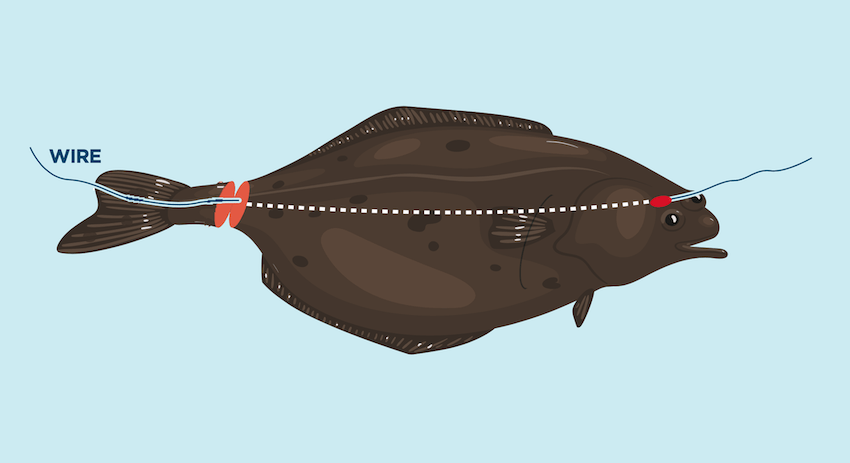
After you have done ike-jime and shinkei-jime, remember to bleed the warm blood out of the fish. There are many ways to do it. You can cut the gill and naturally massage the blood out or pressure bleed it. Bleeding the fish slows rigor mortis and helps get rid of that “fishy” taste.
Properly cooling down the fish also will delay rigor mortis and maintain top-quality meat. We put the fish on ice to keep it fresh, but is putting ice on the skin enough? After you kill and bleed your fish, remove the guts, gills, and blood without exposing the flesh. Now you are ready to cool your fish down completely. Put ice in the cavities and on the skin; this will chill your meat from inside and outside. To chill the fish even better, you want to make ice slurry (mixing saltwater with ice), which chills the fish by covering all the contact surfaces. This is very important for tuna fishing. Commercial fishers flash-freeze their catch whole. For us sport anglers, the best we can do is use salt ice slurry on the boat to chill the fish rapidly. You might have a window of 2 to 4 hours to get your fish chilled before it gets completely stiff and then starts decaying.
When you take the fish out of the cooler to the cleaning table, you will notice that the skin color hasn’t changed and the fish is not stiff—it still will be floppy like a fresh, live fish. Some people say it’s harder to fillet, but the improved meat quality makes it worth it. The meat is exactly like fresh, with very little or no gapping, especially on rock cod, lingcod, halibut, and tuna. By killing your fish properly and chilling rapidly, you can achieve near sashimi-grade quality with your catch. The next step is to vacuum seal your catch and freeze it at -4°F for
7 days to kill off parasites for sashimi or ceviche (raw) consumption. The better you look after your catch, the better fish you’ll be able to put on your table. Give it a try!
This article appeared in Island Fisherman magazine. Never miss another issue—subscribe today!







